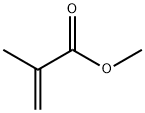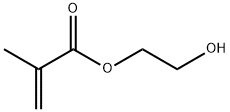Methyl methacrylate , AR, 99%, including 30ppmdmbp stabilizer , 80-62-6
Synonym(s):
EPN;MME;Neprilysin;Atriopeptidase;Common acute lymphocytic leukemia antigen
CAS NO.:80-62-6
Empirical Formula: C5H8O2
Molecular Weight: 100.12
MDL number: MFCD00008587
EINECS: 201-297-1
PRODUCT Properties
| Melting point: | -48 °C (lit.) |
| Boiling point: | 100 °C (lit.) |
| Density | 0.936 g/mL at 25 °C (lit.) |
| vapor density | 3.5 (vs air) |
| vapor pressure | 29 mm Hg ( 20 °C) |
| FEMA | 4002 | METHYL 2-METHYL-2-PROPENOATE |
| refractive index | n |
| Flash point: | 50 °F |
| storage temp. | 2-8°C |
| solubility | 15g/l |
| form | Crystalline Powder or Crystals |
| color | White to pale yellow |
| Odor | at 0.10 % in dipropylene glycol. acrylic aromatic fruity |
| Odor Type | acrylate |
| biological source | synthetic |
| explosive limit | 2.1-12.5%(V) |
| Odor Threshold | 0.21ppm |
| Water Solubility | 15.9 g/L (20 ºC) |
| Merck | 14,5941 |
| JECFA Number | 1834 |
| BRN | 605459 |
| Henry's Law Constant | 2.46 x 10-4 atm?m3/mol at 20 °C (approximate - calculated from water solubility and vapor pressure) |
| Exposure limits | NIOSH REL: TWA 100 ppm (410 mg/m3), IDLH 1,000 ppm; OSHA PEL:
TWA 100 ppm; ACGIH TLV: TWA 100 ppm with intended TWA and STEL values of 50 and
100 ppm, respectively. |
| Dielectric constant | 2.9(20℃) |
| Stability: | Volatile |
| InChIKey | VVQNEPGJFQJSBK-UHFFFAOYSA-N |
| LogP | 1.38 at 20℃ |
| CAS DataBase Reference | 80-62-6(CAS DataBase Reference) |
| IARC | 3 (Vol. Sup 7, 60) 1994 |
| NIST Chemistry Reference | 2-Propenoic acid, 2-methyl-, methyl ester(80-62-6) |
| EPA Substance Registry System | Methyl methacrylate (80-62-6) |
Description and Uses
Methyl methacrylate is an organic compound with the formula CH2=C(CH3)COOCH3. This colourless liquid, the methyl ester of methacrylic acid (MAA) is a monomer produced on a large scale for the production of poly(methyl methacrylate) (PMMA).
Methyl methacrylatec is used in acrylic bone cements used in orthopedic surgery; in the production of acrylic polymers, polymethylmethacrylate and copolymers used in acrylic surface coatings; in the manufaeture of emulsion polymers; in the modification of unsaturated polyester resins; in the production of higher methacrylate, acrylic fibers, acrylic film, inks, radiation-polymerized impregnants for wood, and solvent-based adhesives and binders; as an impact modifier of PVC; in medicinal spray adhesives; in nonirritant bandage solvents; in dental technology as ceramic filler or cement; to coat corneal contact lenses; in intraocular lenses, artificial nails, and hearing aids; as a monomer for polymethaerylate resins; in the impregnation of concretc.
Safety
| Symbol(GHS) |   GHS02,GHS07 |
| Signal word | Danger |
| Hazard statements | H225-H315-H317-H335 |
| Precautionary statements | P210-P233-P240-P241-P280-P303+P361+P353 |
| Hazard Codes | F,Xi,T |
| Risk Statements | 11-37/38-43-39/23/24/25-23/24/25 |
| Safety Statements | 24-37-46-45-36/37-16-7 |
| RIDADR | UN 1247 3/PG 2 |
| OEB | A |
| OEL | TWA: 100 ppm (410 mg/m3) |
| WGK Germany | 1 |
| RTECS | OZ5075000 |
| Autoignition Temperature | 815 °F |
| TSCA | Yes |
| HazardClass | 3 |
| PackingGroup | II |
| HS Code | 29161410 |
| Hazardous Substances Data | 80-62-6(Hazardous Substances Data) |
| Toxicity | The acute toxicity of methyl methacrylate is low. Irritation of the skin, eye, and nasal cavity has been observed in rodents and rabbits exposed to relatively high concentrations of methyl methacrylate. The chemical is a mild skin sensitizer in animals. The effect observed most frequently at lowest concentration after repeated inhalation exposure to methyl methacrylate is irritation of the nasal cavity. Effects on the kidney and liver at higher concentrations have also been reported. |
| IDLA | 1,000 ppm |



